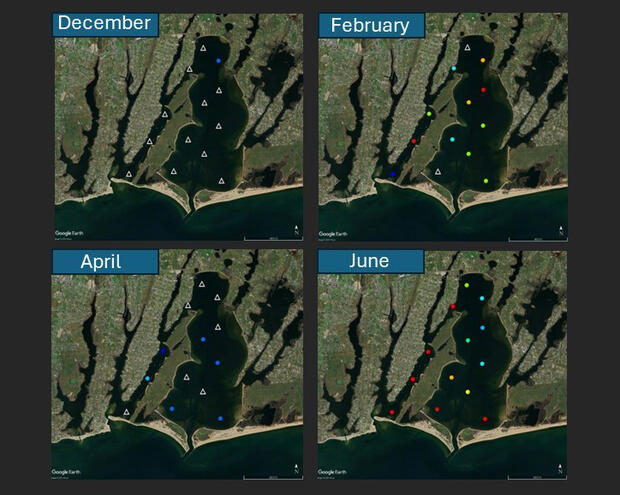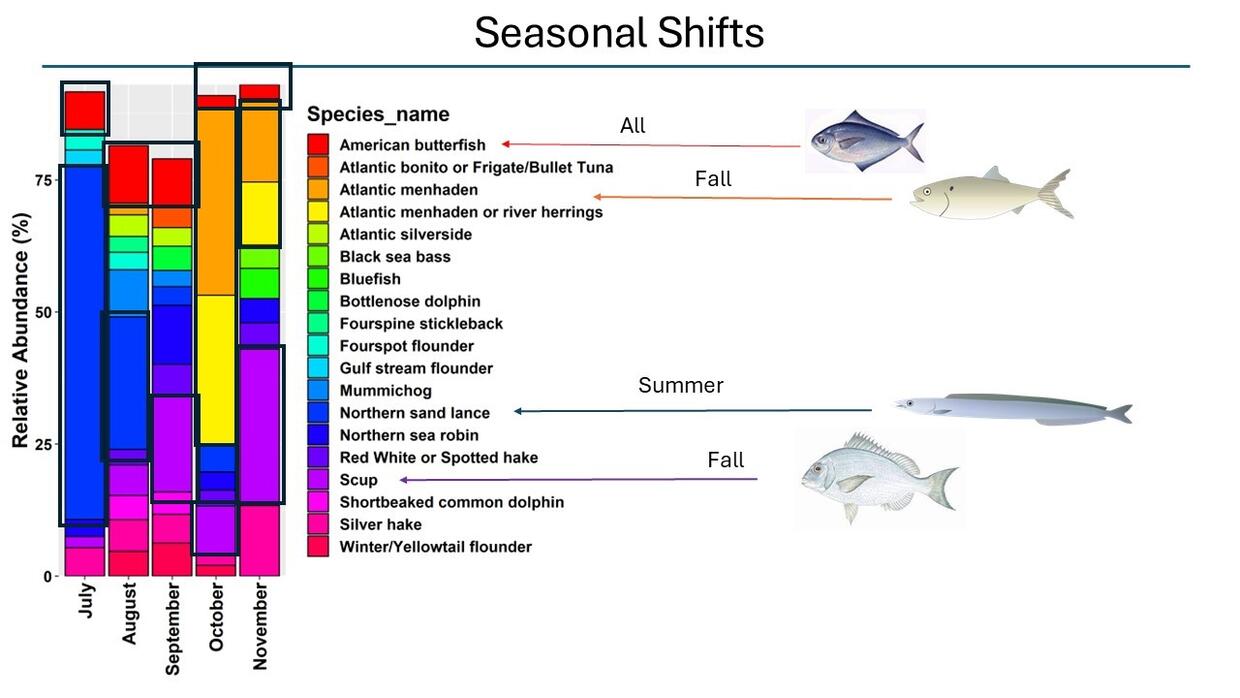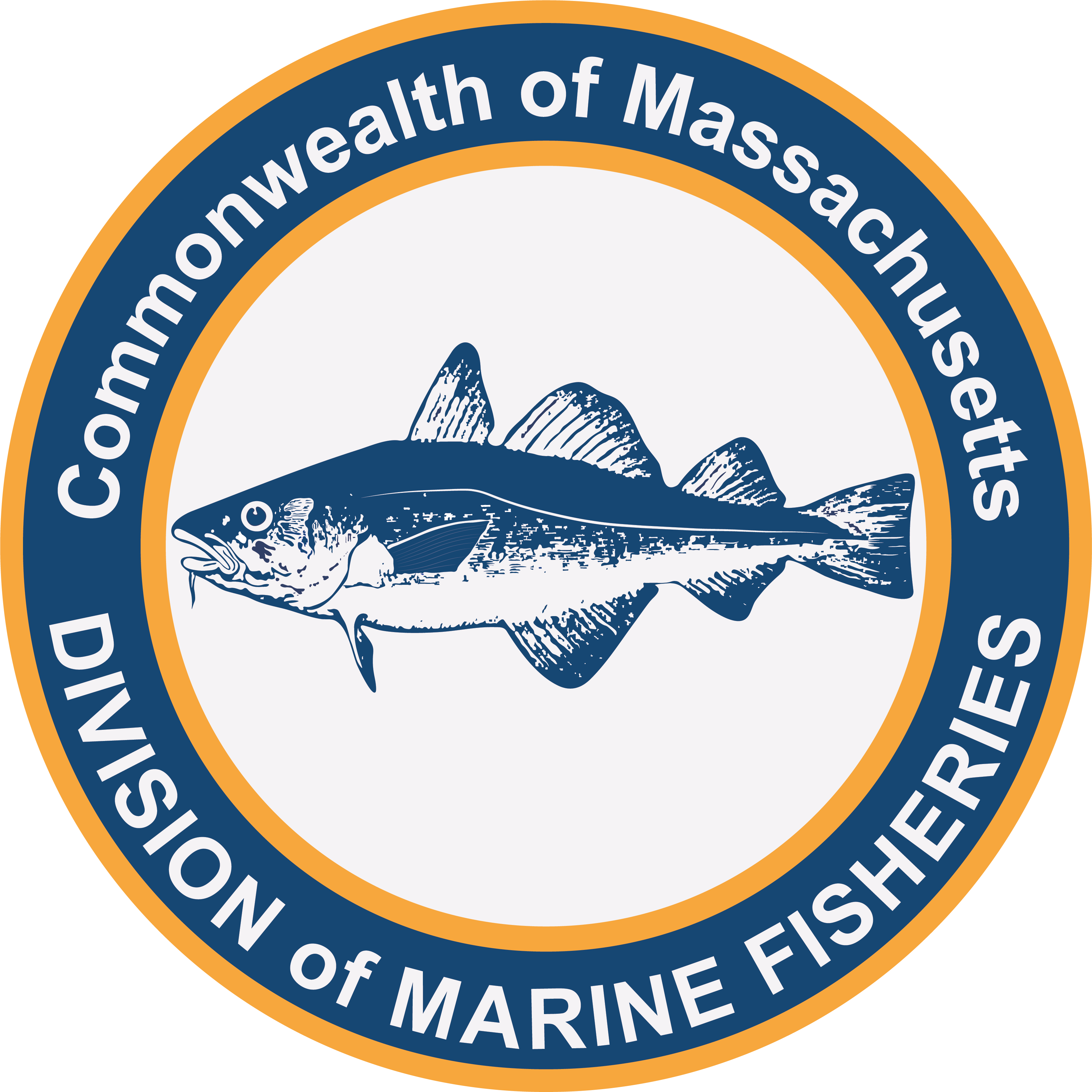- Division of Marine Fisheries
The analysis of environmental DNA (eDNA) is an emerging technique that can be used to monitor species’ presence, distribution, and habitat use. eDNA is genetic material that is naturally shed into the environment by organisms that can be easily collected by water sampling and filtration. eDNA analysis has the potential to improve our understanding of the distribution of a variety of marine species and to complement existing monitoring methods. Through a laboratory technique known as quantitative polymerase chain reaction (qPCR), eDNA of a single species can be detected at the time and place of sampling. Genetic metabarcoding of eDNA characterizes biodiversity to allow for an ecosystem-level assessment. In the marine environment, metabarcoding can be used to characterize entire vertebrate and invertebrate assemblages, from the base of the food web up through top predators and can provide detailed information about changes in community structure when water samples are collected in a consistent spatial and temporal framework.
qPCR eDNA Case Study: Winter Flounder
Since 2021, DMF’s Habitat Program has been collaborating with the Gloucester Marine Genomics Institute (GMGI) on eDNA projects designed to improve our understanding of winter flounder habitat use in Cape Cod embayments. Winter flounder enter southern New England embayments to spawn in winter months. Their eggs are laid directly on the seafloor, where they are sensitive to turbidity impacts, leading to time of year (TOY) restrictions on dredging. Current spatiotemporal habitat use in response to climate change and stock declines is not well understood. The resulting precautionary approach to TOY implementation broadly restricts dredging in space and time, which often conflicts with available construction windows. DMF collected water samples for winter flounder eDNA detection from 10–13 stations in six Cape Cod embayments for 12 consecutive months in 2021–2022. Detections peaked in winter months when adults are presumed to be aggregating in these systems to spawn and also in early summer when the resulting young-of-year biomass is at its peak (see figure). However, patterns differed among estuaries suggesting system-specific habitat use.
During winter 2023 and 2024, the Habitat Program initiated a joint eDNA-fyke net survey in Waquoit Bay, Falmouth, MA to improve our understanding of the prior eDNA survey results. Fyke nets were installed at four locations in Waquoit Bay and monitored weekly while eDNA samples were collected throughout Waquoit Bay on a biweekly schedule. Fyke catches confirmed the presence of mature, reproductively active winter flounder with peak catches occurring in January and February followed by a sharp decline from March through April. Preliminary eDNA results mirror this pattern and provide additional support for using eDNA as an independent monitoring tool.
eDNA Metabarcoding Case Study: Offshore Wind
In collaboration with GMGI and the New England Aquarium (NEAq), the Habitat Program initiated an eDNA monitoring program in the Offshore Wind Lease Areas off southern Massachusetts in 2023. These areas also support many recreationally and commercially important fishing activities. With multiple offshore wind projects already underway, there is a need for coordinated research efforts to measure the potential impacts of offshore wind development and construction on fisheries and the marine ecosystem in southern New England. Monthly eDNA sampling was initiated in May 2023 with surface and bottom water collected from 40 stations split between the Vineyard Wind 1, South Fork, and Revolution Wind lease areas in addition to nearby reference sites outside the regions of active development). Sampling continued through November 2023.
For this project, eDNA metabarcoding is being used to characterize the diversity of invertebrate and vertebrate fauna in these lease areas pre-, during, and post-construction to address concerns of potential ecosystem-level impacts. DMF initiated a second field season of sampling in May 2024 with plans to maintain the same monthly sampling schedule completed in 2023. Continued sampling will provide a longer-term record of marine biodiversity in these offshore southern New England waters. Preliminary results for vertebrates detected a total of 77 species of bony fishes, elasmobranchs, marine mammals, birds, and sea turtles. Northern sand lance accounted for most of the eDNA detections in summer months with scup and menhaden taking its place in fall samples. American butterfish were also consistently detected across seasons (see figure). These results highlight the ability of eDNA to characterize the dominant species at the base of the food web and its capacity to detect any ecosystem shifts over time. eDNA results will complement other ongoing monitoring efforts (e.g., acoustic telemetry, bottom trawl, ventless trap) to help us understand ecosystem-level responses to offshore wind development.
Next Steps
In addition to continuations of the winter flounder and offshore wind monitoring programs, the Habitat Program has begun partnering with other DMF monitoring programs to explore the potential for eDNA to provide complementary information to these existing survey methods. Water samples for eDNA analysis have been collected during the past four Resource Assessment Bottom Trawl Surveys for comparison with trawl catches as well as alongside the Resource Assessment Program’s young-of-year winter flounder seine survey and Habitat Program’s baited remote underwater video (BRUV) surveys of artificial reefs in Nantucket Sound. Continuation of these eDNA monitoring programs and synthesis with existing survey data will help to broaden our understanding of marine resources in Massachusetts waters.
By Dr. John Logan, Fisheries Biologist, Habitat Program


